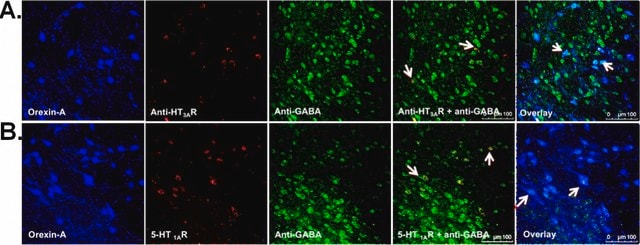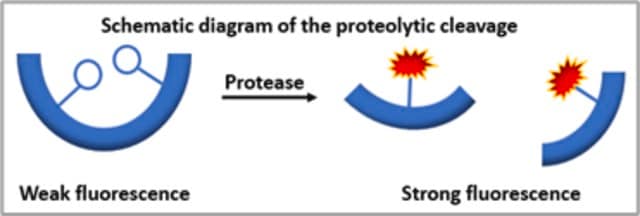MAB316
Anti-GABA Antibody, clone 5A9
clone 5A9, Chemicon®, from mouse
Seleccione un Tamaño
865,00 €
Seleccione un Tamaño
About This Item
865,00 €
Productos recomendados
origen biológico
mouse
Nivel de calidad
forma del anticuerpo
purified antibody
tipo de anticuerpo
primary antibodies
clon
5A9, monoclonal
reactividad de especies (predicha por homología)
mammals
fabricante / nombre comercial
Chemicon®
técnicas
ELISA: suitable
immunohistochemistry: suitable
western blot: suitable
isotipo
IgG1
Condiciones de envío
wet ice
modificación del objetivo postraduccional
unmodified
Información sobre el gen
human ... GABRA1(2554)
Especificidad
Inmunógeno
Aplicación
Immunoblotting not recommended due to low molecular wgt: 103Da.
Optimal working dilution must be determined by the end user.
Neuroscience
Neurotransmitters & Receptors
Forma física
Almacenamiento y estabilidad
Nota de análisis
Myeloblasts, lymphocytes, erythroblasts
Otras notas
Información legal
Cláusula de descargo de responsabilidad
¿No encuentra el producto adecuado?
Pruebe nuestro Herramienta de selección de productos.
Código de clase de almacenamiento
12 - Non Combustible Liquids
Clase de riesgo para el agua (WGK)
WGK 2
Punto de inflamabilidad (°F)
Not applicable
Punto de inflamabilidad (°C)
Not applicable
Certificados de análisis (COA)
Busque Certificados de análisis (COA) introduciendo el número de lote del producto. Los números de lote se encuentran en la etiqueta del producto después de las palabras «Lot» o «Batch»
¿Ya tiene este producto?
Encuentre la documentación para los productos que ha comprado recientemente en la Biblioteca de documentos.
Filtros activos
Nuestro equipo de científicos tiene experiencia en todas las áreas de investigación: Ciencias de la vida, Ciencia de los materiales, Síntesis química, Cromatografía, Analítica y muchas otras.
Póngase en contacto con el Servicio técnico



![StreptaWell™ (transparent 96-well) pkg of 5 plates (11664778001 [12 x 8 well strips and frame]), pkg of 15 plates (11734776001 [96 wells])](/deepweb/assets/sigmaaldrich/product/images/120/082/4ba5a04b-f4d7-49e0-9467-40c6b3cbb9b0/640/4ba5a04b-f4d7-49e0-9467-40c6b3cbb9b0.jpg)




